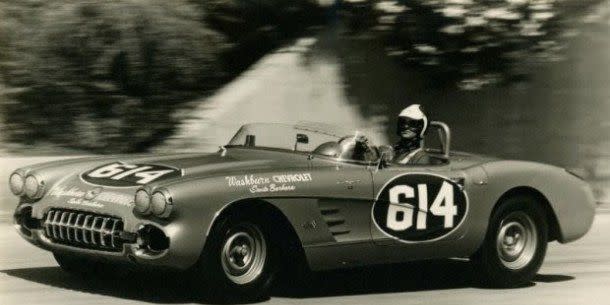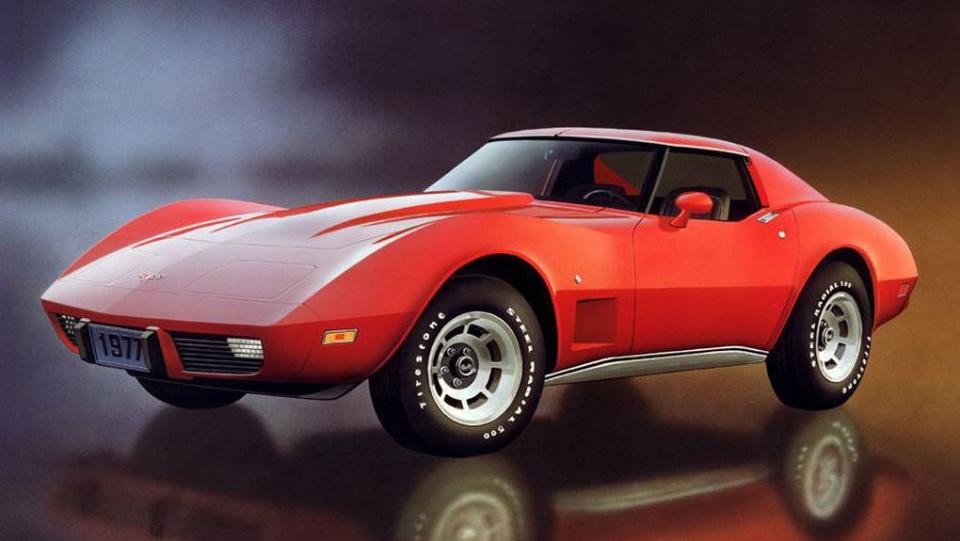C8 Corvette Has Big Shoes to Fill

All that matters this week is the C8 Corvette. On Thursday it will make its first appearance in front of the assembled press and immediately a bit torrent of electronic misinformation will follow. It will be tweeted, Facebooked, Reddit-itted, blogged, vlogged and barfed out as if a massive electromagnetic pulse was emanating from GM Public Relations. It's amazing how fast a press release can be badly rewritten by 300 or so media outlets. Yeah, C/D will have its coverage too; comprehensive, authoritative and in something approximating English.
Nothing lasts forever, but the Corvette has at least stuck around a very long time. Remember that it started in 1953 not as a calculated business decision, but as a show car built to goose interest in what was then the incredibly boring Chevrolet brand, though "brands" in the early 1950s weren't the grim, over-calculated, psychologically tested assault on consumers that they are now. That first Corvette was a slapped together not-that-hot rod; a cheap fiberglass body on Chevy's already archaic passenger car chassis.

That first Corvette wasn't an engineering tour de force like the contemporary Mercedes 300SL or the next step in a glorious sports car tradition like the Jaguar XK120. And it wasn't spindly and delicate like the MG TD or TF. It was closer in spirit to the chopped down street race cars being cobbled together by self-sufficient guys, many of them World War II veterans, playing around in garages to keep themselves busy after work. After all, back then a 17-inch, black-and-white GE television cost $289.95—the equivalent of $2781.60 in 2019—while car parts were cheap and creativity was free.
Of course the Corvette has evolved a lot over its first seven generations. But it was always something accessible. Most of its mechanical bits were always closely related to what Chevy was dumping into station wagons and pickup trucks; it was never priced to keep it exclusively in the hands of the wealthy; practically every local Chevy dealer had one on its showroom floor; and even today, used Corvettes are dirt cheap.

Old 1984 to 1996 C4s can be snatched up for under $4000 today. Often well under $4000 in the seedier corners of Craigslist. Go try and find any Porsche 911 anywhere near that cheap. Hell, try getting a good used Honda Civic that cheap.
The Corvette didn't earn its racing bona fides with massive factory teams. One of the greatest early Corvette campaigns was mounted out of Washburn Chevrolet here in my hometown of Santa Barbara, California, and Bob Bondurant made his bones driving cars like the one pictured atop this column. The C1 and C2 racers that ran for Washburn wore the number "614" because the showroom was located at 614 Chapala Street. On occasion you could go down to the dealer and see some of the same mechanics that did oil changes on dad's Biscayne wrenching on the race cars.

GM and Chevrolet have always built the Corvette, but it is how they've been used, abused, raced, modified and cherished by Americans that have woven it into American culture. It's Dirk Diggler's orange '77 growing ever more decrepit as he dissolves into debauchery and desperation in the 1997 movie Boogie Nights. It's John Greenwood's wide-body racers during the 1970s roaring through IMSA. It's cruising boulevards, running gymkhanas, getting groceries, and commuting in a two-seater that's not quite like anything else in the world. It's taking a sick dog to the vet in a 'Vette. These and 1.5 million other reasons are why the Corvette matters as a cultural touchstone.
Maybe all that will change with the new C8. Even knowing as little as I do now, this is obviously a radically different Corvette. Its engineering is more akin to what Ferrari and Lamborghini have been selling than it is to any previous Corvette. It's hard to imagine that more of its substance won't be less mechanical and more electronic. How many local Chevy dealers will build their own race team around it?
When the C8 makes its big splash this Thursday, interest in it will spike and for at least a few moments it will be the most interesting car in the world. But how long will that interest last? Will all the inevitable hybrid and super-duper versions that follow in the next few years be enough to keep the Corvette's place in the American soul? Does America's video-game and social media-obsessed soul still have room for a sports car?
This week is all about Corvette hype. But in a few months we start figuring out whether this new car has any relevance in this very different world. It's not 1953 anymore.
('You Might Also Like',)

 Yahoo Autos
Yahoo Autos 